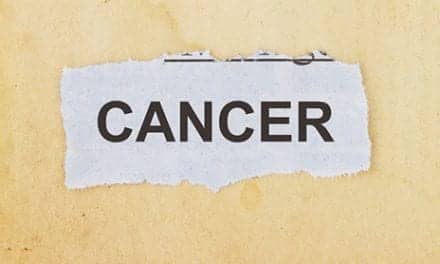A winning science-based strategy
 Cosmetic procedures, both surgical and nonsurgical, have entered the mainstream in the ever-increasing quest for a youthful and healthy appearance. Nearly 8.25 million plastic surgery procedures were performed in 2003, according to the American Society for Aesthetic Plastic Surgery (ASAPS)—an increase of 20% from the previous year. Surgical procedures reached an all-time high at 1.82 million, and nonsurgical procedures climbed to 6.43 million.
Cosmetic procedures, both surgical and nonsurgical, have entered the mainstream in the ever-increasing quest for a youthful and healthy appearance. Nearly 8.25 million plastic surgery procedures were performed in 2003, according to the American Society for Aesthetic Plastic Surgery (ASAPS)—an increase of 20% from the previous year. Surgical procedures reached an all-time high at 1.82 million, and nonsurgical procedures climbed to 6.43 million.
Until recently, surgical procedures were generally a messy affair with swelling, bruising, and drains, among other discomforts. To make matters worse, surgeries took weeks to heal, forcing many patients into temporary hiding. Despite dramatic advances, the concern over healing without lingering scars remains paramount in the minds of patients as well as their physicians. Even in nonsurgical procedures, inflammation and scarring are a common cause of anxiety and discomfort. Recent scientific advances have culminated in a new strategy for faster healing and minimal scarring. This approach combines internal and external interventions, ideally initiated prior to the procedures, with continuation during the healing period and beyond.
Risks of Cosmetic Surgery
Although no surgery is risk free, complications are rare and mostly correctable in the hands of an experienced surgeon. These complications include: bleeding and hematoma, infection, seroma (fluid collection), suture reactions, skin reactions, wound separation, necrosis (ischemia and tissue death), nerve damage, and scarring. Although these risks are important, and some (such as infections, necrosis and nerve damage) are more serious than others, the most common by far—even in the hands of the most experienced surgeon—is scarring. All other complications contribute to increased scarring.
Wound Healing/Scarring at a Glance
Surgery and other cosmetic procedures create trauma or injury to the skin. The proper healing of the resulting wound is critical to the final appearance and degree of scarring. Wound healing proceeds in three phases:
1) Inflammatory phase. Begins immediately following the surgery. During this phase, bleeding stops, white blood cells fight bacterial infection, and collagen formation begins.
2) Proliferative phase. Lasts several weeks. Collagen continues to be produced, and new capillaries (tiny blood vessels) are formed to aid in healing.
3) Remodeling or maturation phase. Continues for several weeks, up to several years. More collagen is produced at first to strengthen wounds, then excess collagen is removed to form a thin, flat, white scar.
Inflammation, Nutritional Status and Immune System
Several critical factors play an important role when it comes to wound healing and scarring. It is well known that smoking, poor nutritional status and a weak immune system contribute directly or indirectly to poor wound healing. The emerging science, however, points to the direct and critical role of inflammation. Inflammation control, which is closely interrelated to the nutritional status and the immune system, is the cornerstone of the strategy for accelerated wound healing and minimized scarring.
Mechanisms at the molecular and cellular level include free radicals, which are major culprits in inflammation. Surgery, laser treatments, and many cosmetic treatments increase the production of free radicals—extremely reactive and harmful molecules. The half-life of one of the more damaging is one billionth of a second. This means that it will attack the first molecule in its path—fat, protein, DNA, sugar. Free radicals damage collagen, proteins and lipids, key components in wound healing. Excess production of free radicals causes oxidative stress, a condition that weakens the immune system, accelerates aging, and increases the risk of chronic diseases.
The Critical Role of Nitric Oxide in Healing and Inflammation
Since its discovery 20 years ago (which resulted in the Nobel Prize), nitric oxide has been shown to play an important role in wound healing. Nitric oxide affects diverse mechanisms involving inflammation, angiogenesis, and cell proliferation. Defined cytokine cascades control these processes; in many cases, nitric oxide appears to modulate these cytokines, especially those associated with inflammation. In addition, nitric oxide is an important component of the immune system in fighting infection.
While extremely useful at normal and modestly elevated amounts, excess production of nitric oxide can have devastating effects. For example, uncontrollable production of nitric oxide during infection causes sepsis—a potentially fatal condition. In less severe conditions, excess amounts of nitric oxide can lead to increased production of nitrogen radicals, which accentuates inflammation and the further production of nitric oxide and free radicals.
Thus, control of inflammation and oxidative stress (from excess production of free radicals and, especially, nitrogen radicals) is key to accelerated wound healing and minimized scarring.
Controlling Production of Free Radicals and Inflammation
A strong antioxidant system is important to fight harmful free radicals. This system has many components, that have evolved over a long period. Some antioxidants are produced in our bodies (endogenous), while others come from our diets (exogenous).
Important endogenous antioxidants include: glutathione, CoQ10, and alpha-lipoic acid.
Dietary and exogenous antioxidants include: vitamin E, vitamin C, vitamin A, carotenoids, and phytochemicals. Some minerals derived from our diet, such as selenium, zinc, manganese and copper, are important components of endogenous antioxidants.
Reducing the production of free radicals is essential for controlling inflammation. To achieve this objective, it is important to choose science-based compounds, which combine antioxidant and anti-inflammatory properties. In addition, the use of strong, natural anti-inflammatory compounds, which act synergistically or complement the function of antioxidants, enable effective management of inflammation. The omega-3 fatty acids are excellent examples of strong anti-inflammatory compounds, which have additional important functions in maintaining the fludity of cell membranes and the elasticity of the skin.
The Holistic Approach

The special role of gamma tocopherol and tocotrienols are key novel components in this strategy. These compounds are members of the Vitamin E family.
Vitamin E at a glance. Most vitamins consist of a single compound—natural or synthetic makes little difference. This is not the case with vitamin E. Eight compounds—four tocopherols and four tocotrienols—make up the vitamin E family. The food we eat contains all eight and is rich in gamma tocopherol; and along with its metabolite produced in the body, it is an effective quencher of nitrogen radicals and is anti-inflammatory. Tocotrienols accumulate preferentially in the skin and have strong protective effects against damage from UV radiation and free radicals.
Most vitamin E supplements contain only alpha tocopherol because it was once thought that only this tocopherol was important. Even worse, most of the vitamin E skin products available contain only a small amount of synthetic dl-alpha-tocopheryl acetate. This translates to the fact that these products contain only one of the eight members of the vitamin E family in a less effective, synthetic form, and do not contain gamma tocopherol or tocotrienols.
In addition, its active group is blocked and cannot fight the free radicals on the skin’s surface. Even after it penetrates the skin, only a small amount becomes active. It is for this reason that the role of vitamin E in wound healing and scarring is controversial at best. Only products that supply the complete vitamin E family and are particularly rich in gamma tocopherol and tocotrienols in their natural, unesterified form, contribute to accelerated wound healing and minimized scarring.
Implementing The Strategy
Lifestyle and Diet
The benefits of not smoking, getting enough exercise, maintaining a healthy diet, controlling weight, relaxing, managing stress and emotional health, consuming alcohol in moderation, and limiting exposure to the sun, are well known. All of these factors affect the immune, inflammatory, and antioxidant status, and influence wound healing and scarring. The following interventions can provide significant benefits:
Pre-operative intervention (preferable for six weeks or longer):
Internal
• Optimized, well-balanced and wide-spectrum supplement providing key nutrients and antioxidants that complement and enhance the body’s antioxidant status and boost its immune system. The supplements should supply vitamin E as natural tocopherols plus tocotrienols, unesterified; vitamins A and C, CoQ10 and alpha-lipoic acid; natural carotenes (alpha, beta, gamma), lutein, lycopene and astaxanthin; selenium, zinc, copper and manganese in chelated form, which support antioxidant enzymes in our body; folic acid, and vitamins B6 and B12.
• Anti-inflammatory compounds, namely omega-3 fatty acids as natural triglycerides, gamma tocopherol and tocotrienols, and CoQ10.
NOTE: Because several of the above compounds have mild anticoagulant properties, some physicians choose to advise their patients to discontinue their use for a few days prior to surgery to reduce the risk of excessive bleeding.
External
• Application twice daily of an oil (or cream) rich in natural unesterified gamma tocopherol plus tocotrienols. The objective is to enrich the area of the operation.
• The use of a water-soluble infusate supplying gamma tocophero, plus tocotrienols with ultrasound or other abrasion treatment.
During the operation and inflammatory phase:
Internal
• The use of oral supplements should be avoided, but can resume 2—3 days after bleeding stops. Then, the anti-inflammatory supplement dose should be doubled.
External
• Application 3 to 4 times daily of an oil product rich in natural unesterified gamma tocopherol plus tocotrienols can resume as soon as the risk of infection from the open wound subsides.
During the proliferative and reconstruction phase:
Internal
• The use of the wide-spectrum and the anti-inflammatory supplements continues as during the inflammatory phase.
• Add a gamma-tocopherol supplement, which supplies 800 milligrams of natural tocopherol concentrate and includes 500 milligrams gamma tocopherol.
• Application two times daily of an oil rich in natural unesterified gamma tocopherol plus tocotrienols continues. A cream may be used instead of the oil, depending on the healing progress and practical considerations.
Beyond the operative stage to support health, wellness, and anti-aging:
Internal
• Optimized, well-balanced, and wide-spectrum supplement.
• Anti-inflammatory supplement at the regular dose.
• Complete vitamin E supplement, which supplies 400 IU plus 400 milligrams of natural, unesterified tocopherols plus tocotrienols.
External

• Use of a water-soluble infusate supplying gamma tocopherol plus tocotrienols with ultrasound or other abrasion treatment.
Andreas M. Papas, MD, is the author of The Vitamin E Factor and editor of the scientific book Antioxidant Status, Diet, Nutrition and Health. Papas is president of YASOO Health Inc, and an adjunct professor at the College of Medicine of East Tennessee State University. For further information contact: (423) 926-2798 or email [email protected].
References
1. American Society for Aesthetic Plastic Surgery (ASAPS). Available at: http://www.surgery.org/download/2003-stats.pdf 2003 ASAPS Statistics Complete charts.
2. Shukla A, Rasik AM, Patnaik GK. Depletion of reduced glutathione, ascorbic acid, vitamin E and antioxidant defense enzymes in a healing cutaneous wound. Free Radic Res. 1997;26:93-101.
3. Thomas DR. Specific nutritional factors in wound healing. Adv Wound Care. 1997;10:40-3.
4. Wilgus TA, Bergdall VK, et al. The impact of cyclooxygenase-2 mediated inflammation on scarless fetal wound healing. Am J Pathol. 2004;165:753-61.
5. Rizk M, Witte MB, Barbul A. Nitric oxide and wound healing. World J Surg. 2004;28:301-6.
6. Schwentker A, Vodovotz Y, et al. Nitric oxide and wound repair: role of cytokines? Nitric Oxide. 2002;7:1-10.
7. Mooney MA, Vaughn DM, et al. Evaluation of the effects of omega-3 fatty acid-containing diets on the inflammatory stage of wound healing in dogs. Am J Vet Res. 1998;59:859-63.
8. Papas AM. The Vitamin E Factor. HarperCollins Publishers Inc., New York, 1999.
9. Cooney R, Franke A, Harwood P, et al. Gamma-tocopherol detoxification of nitrogen dioxide: superiority to alpha-tocopherol. Proc Natl Acad Sci U S A. 1993;90:1771-1775.
10. Jiang Q, Ames BN. Gamma-tocopherol, but not alpha-tocopherol, decreases proinflammatory eicosanoids and inflammation damage in rats. FASEB J. 2003;17:816-22.
11. Ikeda S, Niwa T, Yamashita K. Selective uptake of dietary tocotrienols into rat skin. J Nutr Sci Vitaminol (Tokyo). 2000;46:141-3.
12. Scholl D, Langkamp-Henken B. Nutrient recommendations for wound healing. J Intraven Nurs. 2001;24:124-32.
13. Papas AM, Editor. Antioxidant Status, Diet, Nutrition and Health. CRC Press, Boca Raton, 1998.



